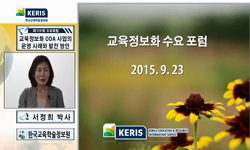This study compares the history, motive, structure and performance of Korea's, Japan‘s and China's ODA. Korea, Japan and China espouse self-effort as a fundamental principle in aid policy. All three donors' programs emphasize loans to facilitate eco...
http://chineseinput.net/에서 pinyin(병음)방식으로 중국어를 변환할 수 있습니다.
변환된 중국어를 복사하여 사용하시면 됩니다.
- 中文 을 입력하시려면 zhongwen을 입력하시고 space를누르시면됩니다.
- 北京 을 입력하시려면 beijing을 입력하시고 space를 누르시면 됩니다.
https://www.riss.kr/link?id=T14004259
- 저자
-
발행사항
서울 : 연세대학교 경제대학원, 2016
-
학위논문사항
학위논문(석사) -- 연세대학교 경제대학원 , 통상 산업전공 , 2016.2
-
발행연도
2016
-
작성언어
한국어
-
주제어
공적개발원조 ; 아시아 공여국 ; 한국 ODA ; 일본 ODA ; 중국 ODA ; ODA ; Asian donors ; Korea's ODA ; Japan's ODA ; China's ODA
-
발행국(도시)
서울
-
기타서명
A comparative study on the patterns of Asian donors' ODA
-
형태사항
iv, 70장 : 삽화 ; 26 cm
-
일반주기명
지도교수: 이두원
- 소장기관
-
0
상세조회 -
0
다운로드
부가정보
다국어 초록 (Multilingual Abstract)
This study compares the history, motive, structure and performance of Korea's, Japan‘s and China's ODA. Korea, Japan and China espouse self-effort as a fundamental principle in aid policy. All three donors' programs emphasize loans to facilitate economic growth for developing countries through aid for economic infrastructure and productive activities drawing from their own development experience. As donors, Korea, Japan and China differ in status. Korea and Japan are member countries of OECD DAC but China is not a member. Korea and Japan have specialized aid agencies such as KOICA and JAICA but China's aid is differently organized, with Ministry of Commerce given a formal role in aid policymaking. While Korea and Japan concentrate aid on Asia, Africa is a priority region for China. Asian donors could contribute to economic growth of developing countries through investment to economic infrastructure and supporting self-help development effort of developing countries. They need to expand their ODA, and increase share of their untied ODA and share of their aid to least developed countries. Asian donors have many important similarities which could facilitate ODA cooperation, especially in the Asian region and African region. Korea, Japan and China need to establish “trilateral ODA policy dialogue" and develop joint ODA activities. This ODA cooperation could be applied to future development assistance to North Korea and contribute to peace in Northeast Asia. Korea needs to try to be an exemplary donor that follows international ODA guidelines and provides effective aid under a single entity that has sole authority over development cooperation policy.
국문 초록 (Abstract)
본 연구에서는 한국, 일본, 중국의 ODA를 역사와 동기, 현황, 추진체계, 특징 측면에서 비교 분석하였다. 한국, 일본, 중국의 ODA는 개도국의 자조노력 지원, 경제인프라 집중 지원, 유상원조 중...
본 연구에서는 한국, 일본, 중국의 ODA를 역사와 동기, 현황, 추진체계, 특징 측면에서 비교 분석하였다. 한국, 일본, 중국의 ODA는 개도국의 자조노력 지원, 경제인프라 집중 지원, 유상원조 중시, 외교적 목적과 경제적 이익을 동시 추구하는 공통점을 가지고 있는 것으로 나타났다. 한편, 한국, 일본은 OECD DAC 회원국인 반면에 중국은 DAC 회원국이 아니며, ODA 규모도 각각 큰 차이를 보이고 있다. 한국과 일본은 전담 원조기관이 있고, 아시아 지역을 중점 지원하고 있으나, 중국은 전담 원조기관이 없고 아프리카 지역을 중점 지원하고 있다. 한국과 중국은 구속성 원조 비율이 높고, 일본은 최빈국에 대한 지원 비율이 낮은 것으로 나타났다. 한국, 일본, 중국은 자국의 개발경험을 바탕으로 수원국 상황에 맞는 맞춤형 원조를 추진해 나가면서, ODA 규모 확대, 비구속성 원조 확대, 최빈국 지원 강화를 도모해야 할 것이다. 또한 한-일-중 3국간 ODA 협력사업을 추진할 필요가 있으며, 3국간 ODA 협력은 향후 대북한 개발협력사업에도 적용될 수 있으며, 이를 통해 동북아 평화증진에도 기여할 수 있을 것이다.












